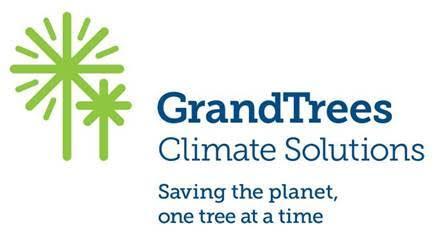February 11, 2020
Trees grow miracles. As the climate changes, we need to plant and protect trees, now more than ever.
Trees absorb carbon dioxide from the atmosphere.
Planting trees helps mitigate climate change.
Trees release oxygen into the atmosphere.
Almost everything that lives needs oxygen.
Trees store carbon.
The world’s forests are significant carbon “sinks” that slow the rate of climate change.
Trees filter dust and pollutants from the air.
Leaves and bark trap harmful airborne particulate matter.
Trees reduce smog and air pollution.
By absorbing nitrous oxides and other pollutants, trees “cleanse” the air.
Trees prevent soil erosion.
The roots of trees hold soil in place on slopes.
Trees help prevent soil compaction.
Healthy soils depend on the air pockets created by roots.
Trees help prevent flooding.
By enhancing infiltration to groundwater, trees reduce run-off from extreme weather events.
Trees protect us from the sun’s UV-B rays.
Shade reduces our exposure to the UV-B rays that cause skin cancer.
Trees are medicine.
Many pharmaceuticals are derived from trees.
Trees reduce cancer, diabetes and asthma rates, and lower our stress levels.
The positive health benefits of trees are connected with many major diseases.
Trees reduce high blood pressure.
Greenspaces calm us, slowing our heart rates and lowering our blood pressure.
Trees contribute to mental health.
Being surrounded by trees makes us feel better.
Trees are good for kids.
The more trees in our neighbourhoods, the healthier our children are.
Trees strengthen communities.
The character of our communities and our sense of identity and place are bolstered by trees.
Trees enhance our neighbourhoods.
The more trees, the better we feel about where we live.
Trees reduce crime and violence.
More tree cover equals less crime in our communities.
Trees increase property values.
The value of our properties increases with the presence of trees.
Trees attract tourists.
Leafy cities draw visitors, and increase tourism dollars.
Trees reduce noise pollution.
Urban sounds are muffled by trees, creating comfortable living conditions.
Trees reduce heating costs in winter.
Evergeen trees insulate our houses, saving us money.
Trees reduce air conditioning costs in summer.
Trees shade our houses, saving us money.
Trees buffer the wind.
Protection from wind enhances our comfort.
Trees enhance road safety in winter.
By trapping drifting snow along highways, trees make our roads safer.
Trees cool our cities.
Canopy cover reduces the “urban heat island effect.”
Trees moderate air temperatures.
By releasing water vapour into the air, trees moderate extreme heat.
Trees shelter wildlife.
Many creatures, such as birds and insects, make their homes, and escape from predators, in trees.
Trees are important for pollinators.
Insects depend on trees for pollen and nectar.
Trees provide food for humans.
The fruit and nuts of many tree species are important staples in our diets.
Trees create clean drinking water.
By filtering rainwater, trees replenish groundwater drinking sources.
Trees are spiritually uplifting.
In many religious traditions, trees hold important spiritual value.
Trees connect us with history.
Some of the oldest living entities on earth are trees.
Trees are beautiful!
The aesthetic value of trees is beyond measure.
Quite simply, trees are crucial for all life on earth.
—
